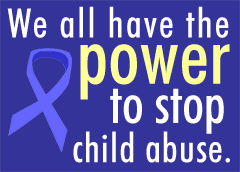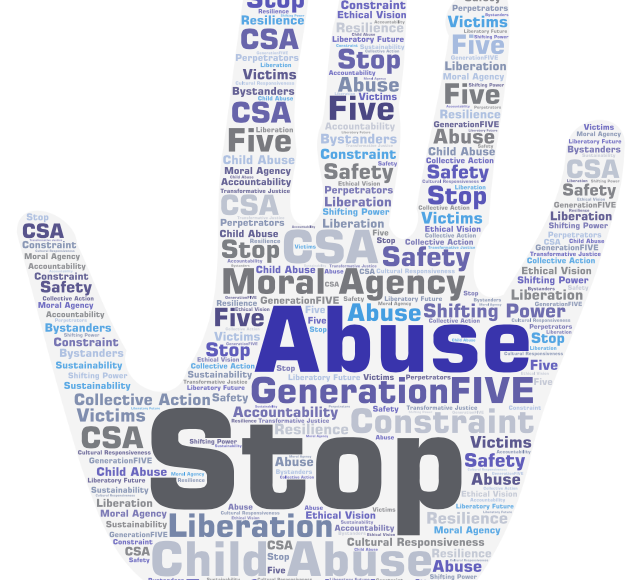Among contemporary social issues, child sexual abuse (CSA) is perhaps both the most and least contentious. While actors across the political spectrum denounce it in the strongest terms, the competing analyses of CSA they offer imply radically divergent understandings of the issue, its causes, and appropriate responses to it. Indeed, the two most common responses to CSA, namely that it is an unthinkable crime committed by dangerous strangers or that that it is a wrongly stigmatized form of potentially positive sexual experience,1 suggest diametrically opposed moral worldviews. While the first view is far more common than the latter, the belief that most of the harms of CSA are due only to its stigmatization is surprisingly common among progressive scholars and activists who are otherwise quite critical of unjust power relations. Yet, as a queer feminist, child advocate, and survivor of patriarchy, I find neither of these worldviews particularly compelling.
Instead, I am most inspired by the queer-of-color, survivor-led, Bay Area collective generationFIVE. This group is unique among organizations responding to CSA because of their radical political analysis of the issue; their grassroots orientation; and their adoption of a “Transformative Justice,” prison abolitionist approach to ending CSA. In framing CSA as an injustice and building a social justice agenda around ending it, generationFIVE defines itself against both the “stranger danger” and “wrongly stigmatized sex” responses to CSA. Deeply committed to an emancipatory vision of a world without CSA but lacking the moral certainty and established institutions of the criminal justice system, generationFIVE takes the risk of actively creating unique responses that attend to specific instances of violence in non-punitive ways. In this post, I argue that generationFIVE’s Transformative Justice approach to CSA represents a compelling exercise of moral agency because it affirms a set of resistant ethical values and practices in the face of systemic oppression, even as it acknowledges the historical contingency and epistemic uncertainty of its position
I believe that generationFIVE exercises moral agency as an effort to continually strive to minimize domination through historically situated experimentation, with the caveat that what counts as domination will only be discernable from within a given historical milieu.
Founded in 2000, generationFIVE grows out of earlier, survivor-led activist work to end gender and sexual violence without recourse to the criminal justice system.2 Noticing “a lack of visible community organizing that addresse[d] child sexual abuse as a political/social change issue,” generationFIVE’s work is based on “a commitment to building the capacity within intimate networks to respond to and prevent child sexual abuse,” as well as “to shift the conditions that allow child sexual abuse to happen.”3 Understanding CSA as “both an individual and a collective crisis requiring social change,”4 generationFIVE adopts both an “analysis of child sexual abuse as both one of the symptoms and perpetuators of oppression and violence” and “a politic committed to systemic change and liberation.”5
This combination of a radical political analysis of CSA and anti-oppressive responses to it culminates in the framework of “Transformative Justice.” Acknowledging “the oppression and limitations of state responses” to CSA, Transformative Justice seeks to “shift power towards collective liberation” rather than demonizing individual perpetrators of abuse while ignoring the structural conditions that enable intimate violence.6 Transformative Justice is centered around four interlocking goals: “safety, healing, and agency for survivors;” “accountability and transformation for people who harm;” “community action, healing, and accountability;” and “transformation of the social conditions that perpetuate violence,” namely “systems of oppression and exploitation, domination, and state violence.”7 Summarized by the slogan “liberatory means for liberatory ends,”8 Transformative Justice confronts the fact that “there are not just a few ‘bad’ people sexually abusing children,” but that “the behavior is wide-spread” and systemic.9 Crucially, Transformative Justice recognizes that the “goal of ending child sexual abuse cannot be realized while other systems of oppression are allowed to continue.”10 Systemic causes of interpersonal violence, such as “gender inequality, class exploitation, and racism” create the conditions for CSA to occur, and CSA is understood to “prevent people from organizing effectively to work for liberation.”11 Thus, generationFIVE’s Transformative Justice framework both stems from and leads the organization to an analysis of CSA that locates it at the center of a grassroots, multi-issue, systemic struggle for radical social change.
For this reason, generationFIVE explicitly rejects carceral and other criminal justice approaches to addressing CSA. As they note, “the legal trend over the last decades towards more severe criminal sentencing has made communities more reluctant to turn to these systems for help when they are experiencing CSA.”12 For generationFIVE, criminal justice responses to CSA not only do not adequately address either the root causes of this violence or the needs of survivors and communities, but they cause further harm to already marginalized communities. I am inspired by generationFIVE’s refusal to choose between a future without the violence of incarceration and one without forms of intimate violence such as CSA. Too often, progressives are forced to choose between urgently necessary justice claims, as if these were mutually exclusive. But generationFIVE reminds me that we need never give up on a comprehensive vision of social justice that leaves no one behind.
As such, generationFIVE’s Transformative Justice framework is intentionally experimental in orientation: “We see this as a potent historical moment, and believe we have profound opportunities to innovate and experiment with meaningful responses to violence.”13 Committed to grassroots social change, Transformative Justice seeks to develop practical responses to CSA out of experimentation in particular contexts and in response specific instances of violence. This does not mean that Transformative Justice provides no general guidelines, but rather that it prompts communities to develop their own responses to CSA based on their self-identified needs. For example, generationFIVE provides eight “guiding principles” of Transformative Justice, these being “liberation,” “shifting power,” “safety,” “accountability,” “collective action,” “cultural responsiveness,” “sustainability,” and “resilience.”14 Under each of these principles, generationFIVE does not provide given models for what they believe should occur in every response to CSA. Rather, they ask generative questions and offer compelling ethical and political critiques of prevailing responses to CSA. While generationFIVE does also offer some more practical advice on how to respond to ongoing instances of CSA, these more concrete suggestions are not what best demonstrates the organization’s exercise of moral agency, which is most visible in their experimental ethos. Speaking to readers of their Transformative Justice handbook, they state that “we encourage you to try things out, to push back on these suggestions and, together, to come up with new and compelling responses that make sense for the contexts in which you live.”16 More specifically, “to practice [Transformative Justice] related to child sexual abuse, we see that collectively we need skills in; trauma analysis and healing, political education and analysis, community organizing, offender treatment and accountability, and group facilitation.”17 By identifying the skills and competencies they have needed to develop in their own work, generationFIVE encourages their readers to recognize that efforts to end CSA require forms of individual and collective transformation. In this way, generationFIVE’s practical approach demands that those responding to CSA, including victims, perpetrators, and bystanders, view anti-violence interventions as opportunities to become different kinds of people.
This is why I find generationFIVE’s work so compelling. They are not simply working on a single issue, but rather are proposing a comprehensive moral vision that necessitates that a different kind of world, populated by new kinds of moral beings, be brought into existence. This revolutionary ethical and political program represents social justice at its more hopeful and transformative. Beyond the specific issue of CSA, generationFIVE’s visionary activism reminds me that radically different, better, and liberatory futures are still possible.

Their experimental ethos, which avoids offering precise prescriptions, is in line with generationFIVE’s larger political vision of social transformation. Rather than presenting themselves as experts or final authorities, generationFIVE seeks to persuade others to actively take up Transformative Justice as a challenge to create a more just and ethical society. As I understand their work, generationFIVE demonstrates moral agency by sharing ethical authority with those who likewise seek to end both CSA and systemic oppression.
Image Credit: “Stop child abuse” by OshaneB is licensed under the Creative Commons Attribution-Share Alike 4.0 International license.
In articulating a powerful moral vision without resorting to absolute foundations, generationFIVE offers a model for progressive activists combating moral nihilism generally. Confronted with both the violence and cruelty of the prison-industrial complex and the horrors of CSA, I find both the “stranger danger” and “wrongly stigmatized sex” frameworks to be tremendously unhelpful. When these are presented as the only possible alternatives, I find myself on the brink of moral nihilism, by which I mean the belief that nothing matters, that no justice is possible, and that all that we can hope for is a slightly less terrible version of the present. I believe that I am far from alone in this sentiment. Rather than giving into moral nihilism, progressives should follow generationFIVE’s experimental ethos as an opportunity to develop alternative and resistant ethical visions. Though it may be precarious and limited, this form of moral agency provides a concrete way to keep the hope of a more justice future alive without resorting to the illusions of permanent ethical truths.
Want to know more about this author? Click here!
Footnotes
- see, for instance, Steven Angelides, “Feminism, Child Sexual Abuse, and the Erasure of Child Sexuality,” GLQ: A Journal of Lesbian and Gay Studies 10, no. 2 (2004): 141-77; Steven Bruhm and Natasha Hurley, eds., Curiouser: On the Queerness of Children (Minneapolis: University of Minneapolis Press, 2004); James R. Kincaid, Erotic Innocence: The Culture of Child Molesting (Durham: Duke University Press, 1998).
- “GenerationFIVE: A History,” accessed 08/31/2020, http://www.generationfive.org/about-us/history/.
- “GenerationFIVE: A History,” accessed 08/31/2020, http://www.generationfive.org/about-us/history/.
- “What is Child Sexual Abuse?” accessed 08/31/2020, http://www.generationfive.org/the-issue/child-sexual-abuse/.
- “Transformative Justice,” accessed 08/31/2020, http://www.generationfive.org/the-issue/transformative-justice/.
- Ibid.
- Ibid.
- Ibid.
- “Childhood Sexual Abuse is a Social Justice Issue,” accessed 08/31/2020, http://www.generationfive.org/the-issue/.
- Ibid.
- Ibid.
- generationFIVE, “Ending Child Sexual Abuse: A Transformative Justice Handbook,” accessed 08/31/2020, http://www.generationfive.org/resources/transformative-justice-documents/g5-transformative-justice-handbook/.
- Ibid., 26.
- Ibid., 37.
- Ibid., 45.[/eft_note]Noting that “there are no easy prescriptions for this type of work: each situation and community needs and deserves its own adaptations,” generationFIVE observes that “these goals asks us to develop new skills and competencies.”15Ibid., 45.
- Ibid., 45.
